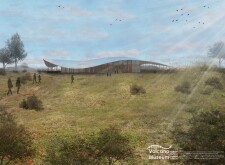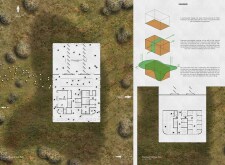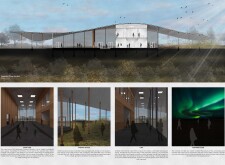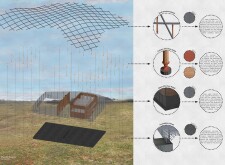5 key facts about this project
The primary function of the building revolves around [insert primary function, e.g., community engagement, education, business], and its design reflects an understanding of the user experience. The layout is strategically organized, allowing for both private and communal spaces. Each area is designed to cater to distinct activities while promoting interaction, collaboration, and a sense of belonging among users.
The materials employed throughout the project are critical to both its performance and its environmental impact. A combination of sustainable materials, including [insert specific materials used, e.g., steel, glass, timber, concrete], has been carefully selected. These choices not only enhance aesthetic appeal but also contribute to the building's overall energy efficiency and sustainability. For instance, the use of [insert eco-friendly material, such as recycled materials or low-VOC paint] aligns with current architectural trends focusing on reducing carbon footprints.
Unique design approaches set this project apart from conventional designs. The integration of biophilic design principles is a standout feature, fostering a connection between occupants and nature. Extensive use of green walls and rooftop gardens underscores the project's commitment to environmental stewardship while enhancing the overall user experience. Moreover, the innovative use of [mention unique architectural features, such as cantilevered structures, open floor plans, or flexible spaces] allows for adaptability, catering to evolving needs.
Natural light plays a pivotal role in the design, with strategically placed windows and skylights that illuminate the interior spaces without compromising energy efficiency. This focus on light not only improves the ambiance of the building but also promotes occupant well-being, a factor increasingly recognized in contemporary architectural practices.
Furthermore, the project embraces advanced technology through the integration of smart building systems. These features, including automated lighting, climate controls, and energy monitoring systems, contribute to enhanced operational efficiency and user comfort.
The overall design outcome of this architectural project reflects a contemporary understanding of space, function, and sustainability. The clear organization of spaces fosters social interaction, while the use of innovative materials and technology ensures that the building is equipped for future challenges.
For those interested in a deeper understanding of the project, we encourage you to explore the detailed architectural plans and sections. Reviewing the architectural designs will provide comprehensive insights into the concepts and intentions that drive this innovative architectural endeavor.


























